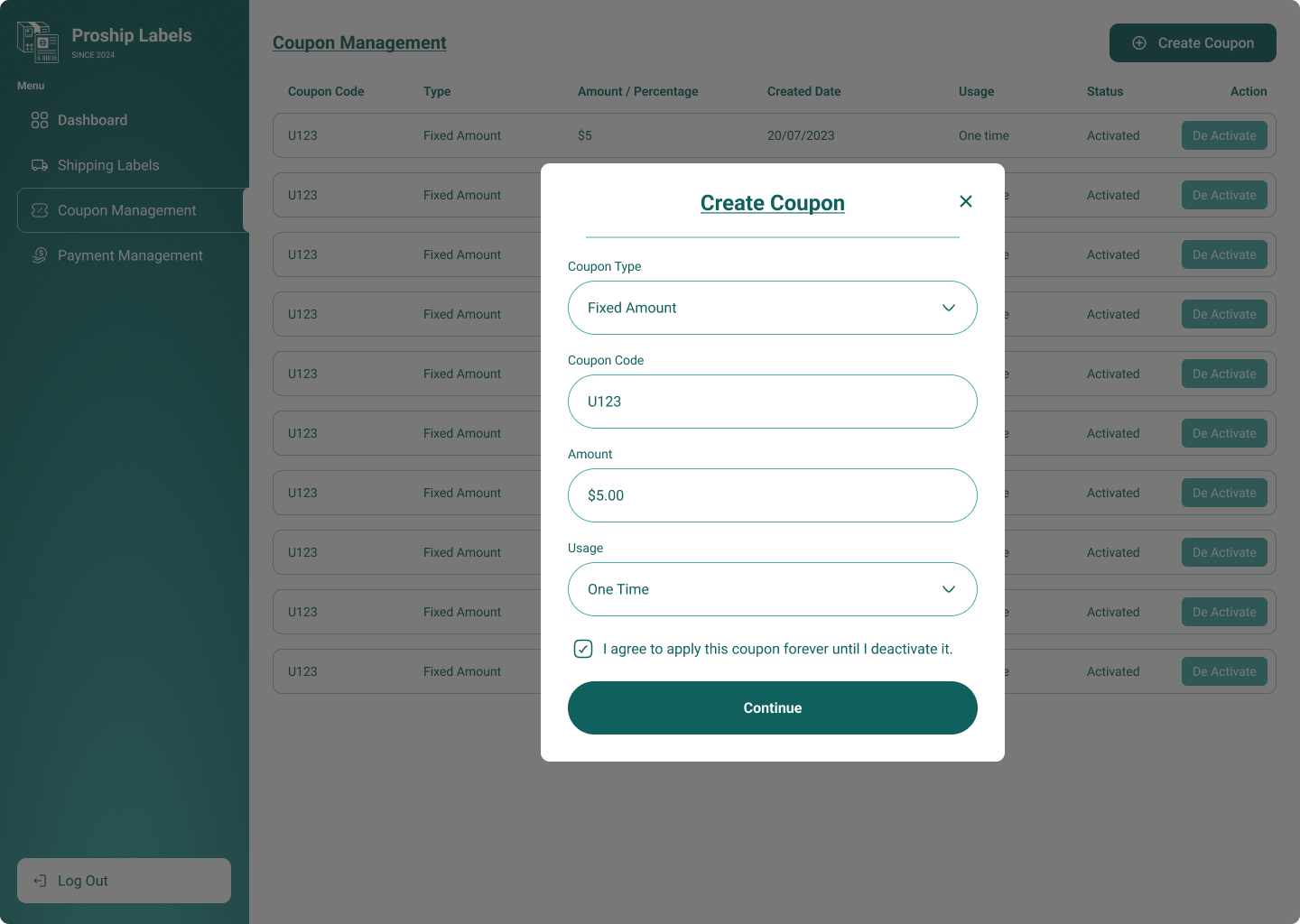Introduction
We collaborated with our client launching a SaaS solution for generating shipping labels. Our goal was to streamline the shipping process through a user-friendly interface that allows easy management of customer addresses and box specifications.
The platform enables users to save and organize addresses for quick access during order fulfillment and create templates for various box sizes to minimize errors. Users can download generated labels directly and manage payments seamlessly within the system.
Close collaboration with the client provided insights that informed our design, resulting in a solution that simplifies logistics and empowers efficient shipping operations. This project exemplifies our commitment to creating practical software that meets the needs of modern e-commerce businesses.

Application Details
User Interface and Workflow
The system offers several features to streamline the shipping process: users can save sender and receiver addresses for recurring use, minimizing errors and simplifying label creation. Box templates, supporting various dimensions and types, can be saved for faster assembly of multi-box shipments. Additionally, users can create multiple shipments simultaneously for high-volume tasks, and after finalizing shipment details, they can download labels in PNG format for easy printing and attachment.
Error Handling and Validation
The system ensures compliance with UPS API requirements by validating box dimensions and weights, instantly notifying users of any discrepancies. It also provides actionable error notifications if shipment details fail to meet service criteria, guiding users to correct issues before finalizing the shipment.
Payment and Pricing
The system calculates the price for each shipping label based on the dimensions and weight of the boxes. This ensures accurate billing and cost management. Users are redirected to a secure payment section where they can complete transactions for their shipping labels.
Management and Reporting
The system offers a detailed shipment overview, displaying all shipment details in a user-friendly table for easy management and tracking. An admin dashboard provides insights into the total number of generated shipping labels, costs, and revenue, with graphical representations for clarity. Additionally, admins can manage payments and address any discrepancies or additional charges from UPS, ensuring efficient financial transaction handling.

Technical Implementations
Frontend Implementation
The frontend of the application is developed using Next.js, which provides server-side rendering and enhances overall performance. For managing the application’s state, Redux is utilized, allowing for effective state management and ensuring a seamless user experience. The frontend focuses on delivering a responsive and dynamic interface, allowing users to interact with the system efficiently.
Backend Implementation
The backend is built using Node.js with Express, handling server-side operations and business logic. MongoDB serves as the primary database, integrated through Mongoose for efficient data management. The backend supports various functionalities, including integrating with third-party services like the UPS API for shipping label generation and the Stripe API for payment processing. The database is structured into multiple collections—Users, Shipments, Boxes, Addresses, and Payments—to manage and track user details, shipment information, box dimensions, addresses, and financial transactions effectively.
API Integrations
The application integrates with several key third-party APIs to enhance its functionality and streamline processes.
UPS API
This API is essential for managing the shipment creation process. It handles the generation of shipping labels based on the shipment details provided by the user. The UPS API ensures that labels are accurately produced and formatted according to UPS standards, facilitating smooth shipping operations.
Stripe API
The Stripe API is used for comprehensive payment processing. It manages all aspects of financial transactions, including handling payments, and applying discounts or coupons. Additionally, it deals with extra charges that may arise if the shipment dimensions provided by the user differ from those updated by UPS. The Stripe API ensures secure and efficient financial transactions, contributing to a seamless user experience.
Conclusion
The advanced shipping label generation system represents a significant step forward in shipping logistics, combining ease of use, efficiency, and comprehensive management features. By addressing key pain points and integrating robust error handling and financial tracking, this solution empowers users and administrators to manage shipping operations with confidence and precision.






